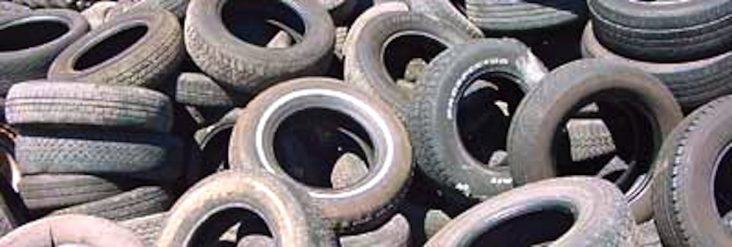Manufacturing report: Arkansas one of top states to house scrap tires
by September 27, 2016 5:37 pm 384 views

Arkansas was one of the top nine states in the U.S. to house stockpiled scrap tires — an environmental and health hazard.
According to a new report from the Rubber Manufacturers Association (RMA), the Natural State joins Illinois, North Carolina, Ohio, Pennsylvania, Virginia and Washington in the lower tier of the top 10 offenders. Combined the seven states account for 12 million of the 70 million scrap tires still needing to be cleaned up.
The top two states – Colorado (31 million) and Texas (17 million) – accounted for approximately 70% of the stockpile while the remaining 14% (10 million tires) were shared among the remaining 41 states.
Cleaning up piles has taken on a new urgency with the threat of the mosquito-borne Zika virus. Abandoned tires are a fertile mosquito breeding ground due to the ability to collect water, retain heat and offer protection from predators. Fortunately, the push for cleanup has resulted in tangible results, the RMA study notes, pointing out that nationally nearly 90% of scrap tires have been repurposed and put to new uses.
“Effective state scrap tire management laws and programs advocated by RMA have produced a remarkable environmental success story,” said Anne Forristall Luke, RMA president and CEO. “Piles have been reduced from more than 1 billion tires in 1990 to fewer than 70 million today. Equally impressive is that nearly 90 percent of annually generated scrap tires are consumed in an end use market.”
The top end use markets for tires include tire-derived fuel (48%), ground rubber (26%) and civil engineering uses (7%). Tire-derived fuel or TDF is used primarily by the cement industry and pulp and paper makers as a supplemental fuel due to its high BTU (heat) content. Ground rubber markets include mulch, rubber modified asphalt, sport surfaces such as athletic tracks and some limited use in new tire manufacturing. Civil engineering uses include tire aggregate as a replacement fill material for light rail vibration dampening, road embankments and other uses.
“More than two decades of successful scrap tire management have produced value-added products that today consume more than 200 million tires annually,” said Forristall Luke. “The dramatic reduction in scrap tire piles has reduced the threat of significant environmental harm caused when tire piles catch fire or sit and become mosquito and vermin breeding grounds.”
Luke says an ongoing challenge is to maintain the achievements in stockpile reduction and market development as states reassess priorities and budgets. States that become complacent after many years of successful scrap tire management and shift funds raised from state tire fees can risk an increase in illegal tire piles and reduced funding for cleanup of abandoned piles.
“States that have passed laws with dedicated funding need to remain vigilant and protect programs to prevent a resurgence of scrap tire problems,” Luke said. “A great deal has been accomplished through working partnerships between state policymakers, recyclers and the tire manufacturing industry. Our shared goal should be zero stockpiles and a commitment toward a cleaner environment and a vibrant, growing scrap tire market.”
